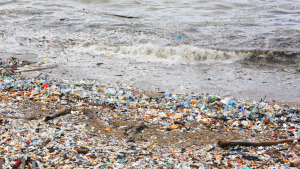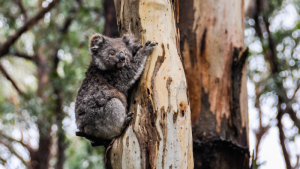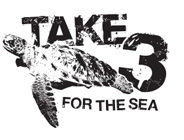1.Clothes washing linked to plastic pollution in the Arctic
Polyester fibres that have been found in sea water across the Arctic most likely come from the washing of synthetic clothes by people in Europe and North America, research has found.
The full article, which appears in The Guardian, says the Arctic is “pervasively” polluted by microplastic fibres from clothes with the comprehensive study finding microplastics in 96 of 97 sea water samples taken from across the polar region.
More than 92% of the microplastics were fibres, and 73% of these were made of polyester and were the same width and colours as those used in clothes. Most of the samples were taken from 3-8 metres below the surface, where much marine life feeds.
Other recent analysis estimated that 3,500 tonnes of plastic microfibres from the washing of clothes in the US and Canada ended up in the sea each year, while modelling suggested plastic dumped in the seas around the UK was carried to the Arctic within two years.
Much more water flows into the Arctic from the Atlantic than the Pacific, and the new research found higher concentrations of the microplastic fibres nearer the Atlantic, as well as longer and less degraded fibres.
“We’re looking at a dominance of Atlantic inputs, which means sources of textile fibres in the North Atlantic from Europe and North America are likely to be driving the contamination in the Arctic Ocean,” said Peter Ross, at Ocean Wise Conservation Association in Canada, who led the study.
“With these polyester fibres, we’ve essentially created a cloud throughout the world’s oceans.”

2.Baby sharks at risk in warming oceans
According to a recent study baby sharks are at risk because of oceans getting warmer across the planet.
Researchers from Australia’s ARC Centre of Excellence for Coral Reef Studies at James Cook University and the University of Massachusetts asked: How will climate change affect species who rely on their environment to regulate their biological processes?
The researchers chose to study the epaulette shark to better understand how ectotherms, species that match their body temperatures to the environment’s, will respond to climate change.
“The epaulette shark is known for its resilience to change, even to ocean acidification,” Dr. Jodie Rummer, co-author of the study told the ARC Centre in a statement.
Epaulette sharks are only found in the Great Barrier Reef, Australia and are often the subject of climate change studies because they thrive in captivity and are considered of little concern in the wild, the study reported. “So, if this species can’t cope with warming waters then how will other, less tolerant species fare?” Rummer asked.
The scientists examined how 27 epaulette shark embryos grew and developed in average summer temperatures, 27 degrees Celsius, and temperatures predicted for the middle and end of the century, 31 degrees Celsius.
“The hotter the conditions, the faster everything happened, which could be a problem for the sharks,” Carolyn Wheeler, lead author of the study, said.
In hotter temperatures “the creatures hatched earlier, were born smaller, and needed to feed straight away, but lacked energy,” CNN reported, and emerged from their egg cases after 100 days, The Guardian added. But in the normal temperatures, the sharks emerged from the egg cases after 125 days.
Sharks could respond to warming temperatures in three likely ways, Rummer said, according to The Guardian. The first case is the sharks find colder temperatures, but only if they find the right habitat.
The second is the sharks could genetically adapt to warmer temperatures. But this is improbable because the sharks like the epaulette grow slowly and reproduce at low rates compared to other fishes, the ARC Centre wrote in a statement.
And the last case would be for the sharks to “disappear off the planet,” Rummer told The Guardian.

3.Outdated Victorian environment laws failing wildlife
In a report released on Monday by the Humane Society International and Environment Justice Australia, conservationists have criticised the state’s outdated laws as being part of the problem facing wildlife rather than a means to protect it.
The Sydney Morning Herald reports that the killing of hundreds of wedge-tailed eagles in Gippsland and the deaths of dozens of koalas during the bulldozing of a plantation are two examples of how Victoria’s environment laws are failing to protect the state’s wildlife.
“Australia’s wildlife faces a torrent of threats, including habitat loss and deliberate persecution, but this legislation is wholly inadequate,” said Nicola Beynon, the head of campaigns for Humane Society International.
“It’s weighted heavily towards handing out permits and licences for people to kill wildlife, with very little scrutiny and no scientific underpinning, no reviews, no transparency and no accountability.”
Victoria’s Wildlife Act dates from 1975, and has never been reformed. When it was introduced in 1975 it was based on the Game Act 1958.




